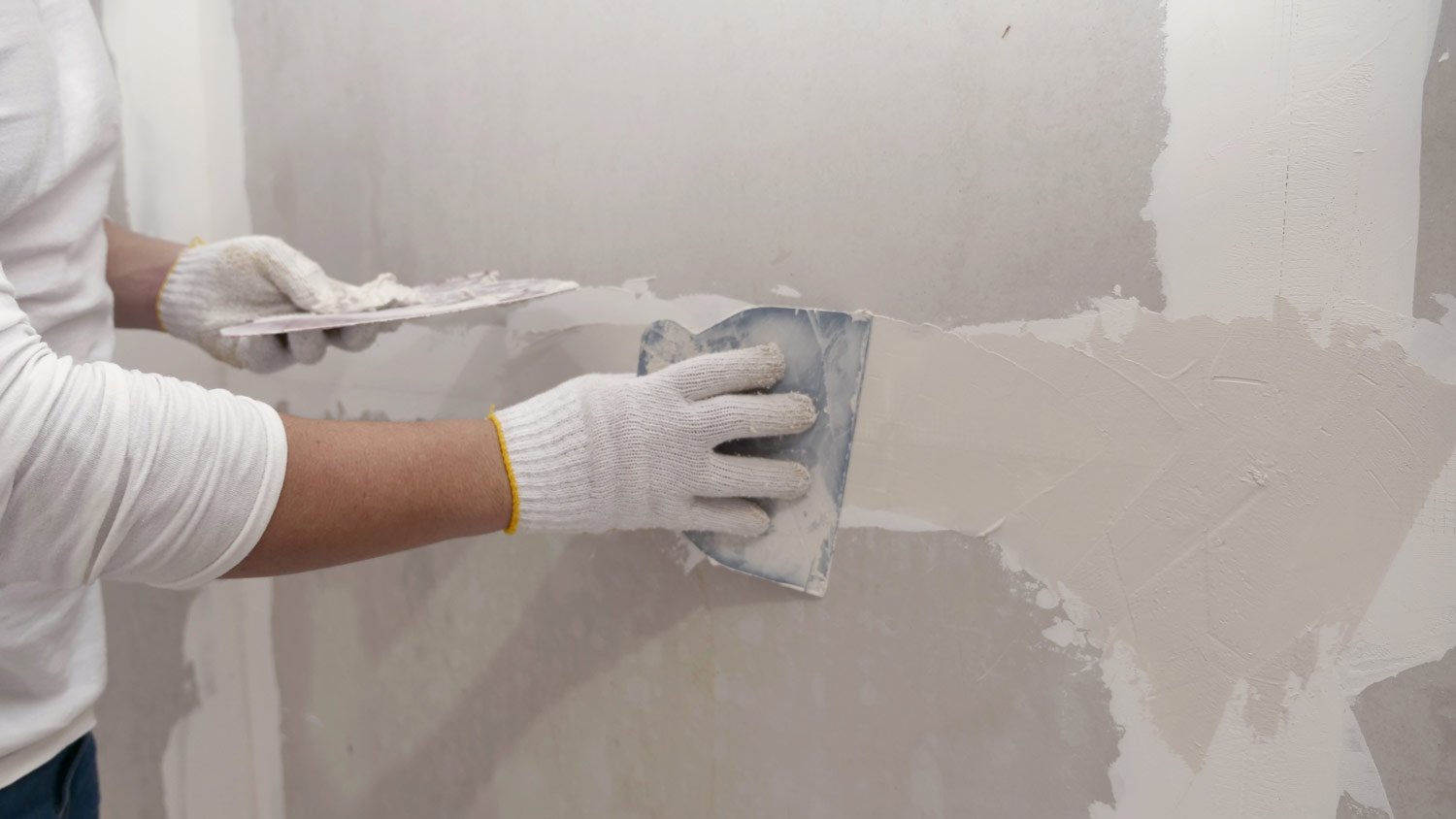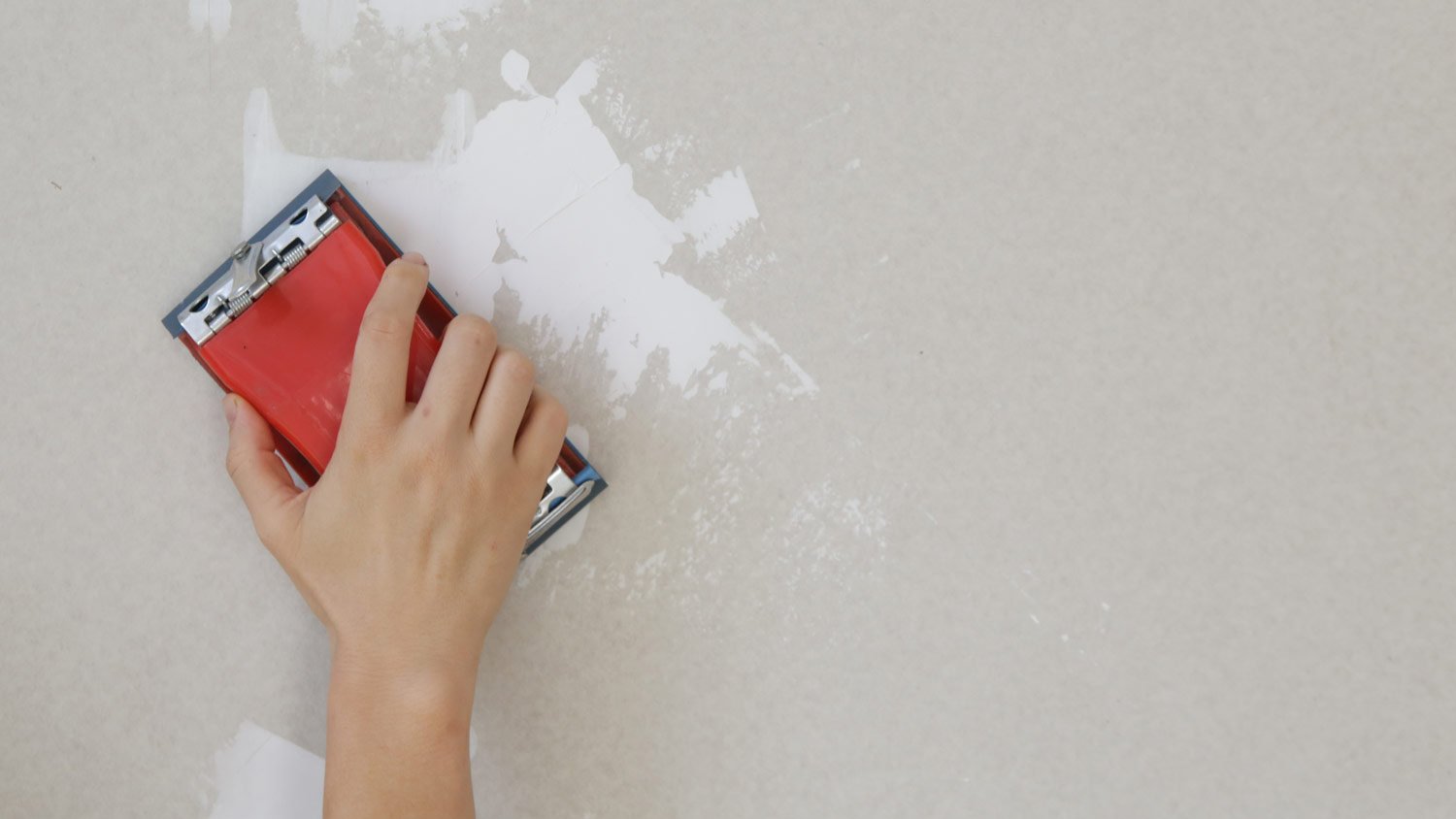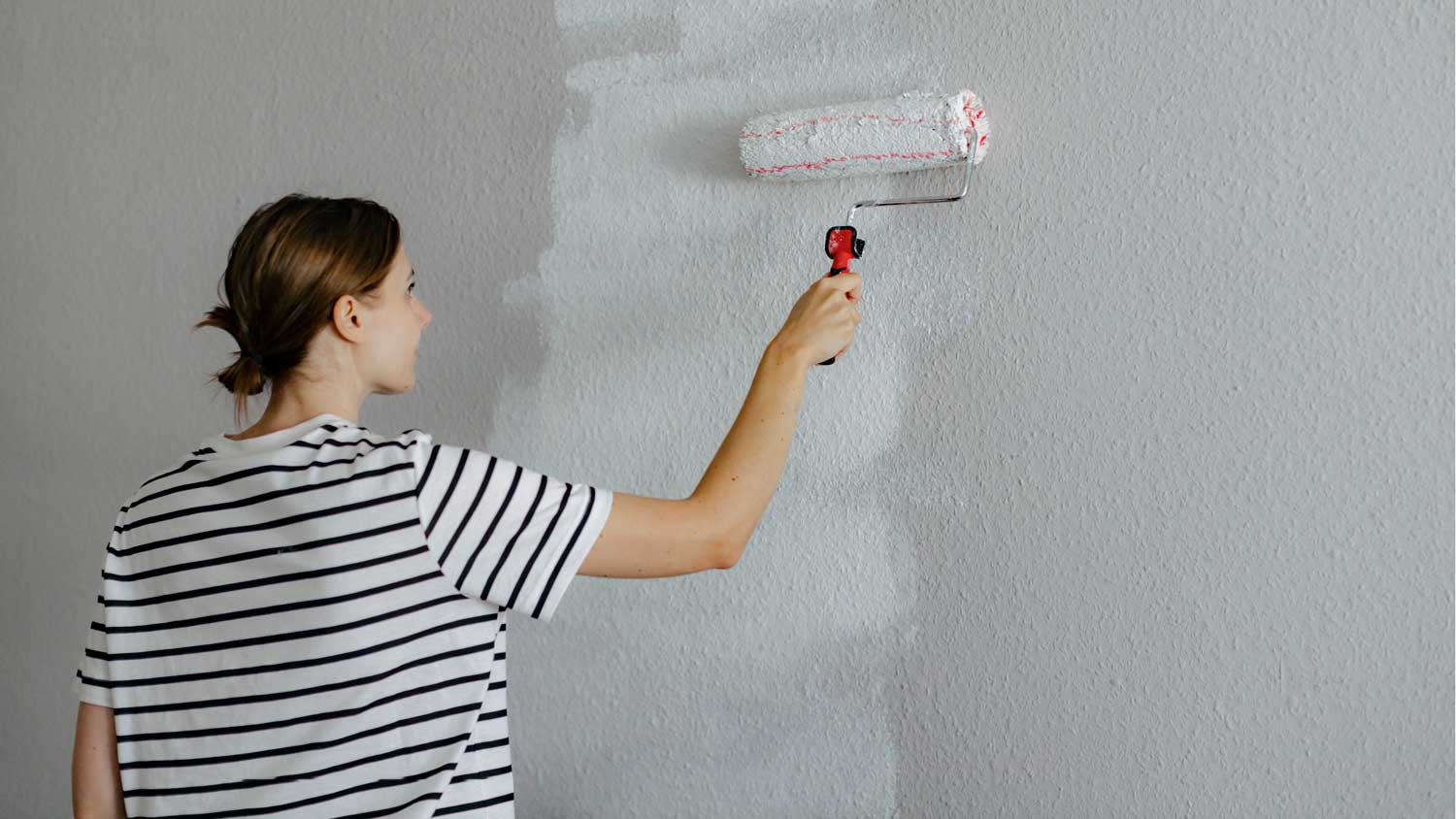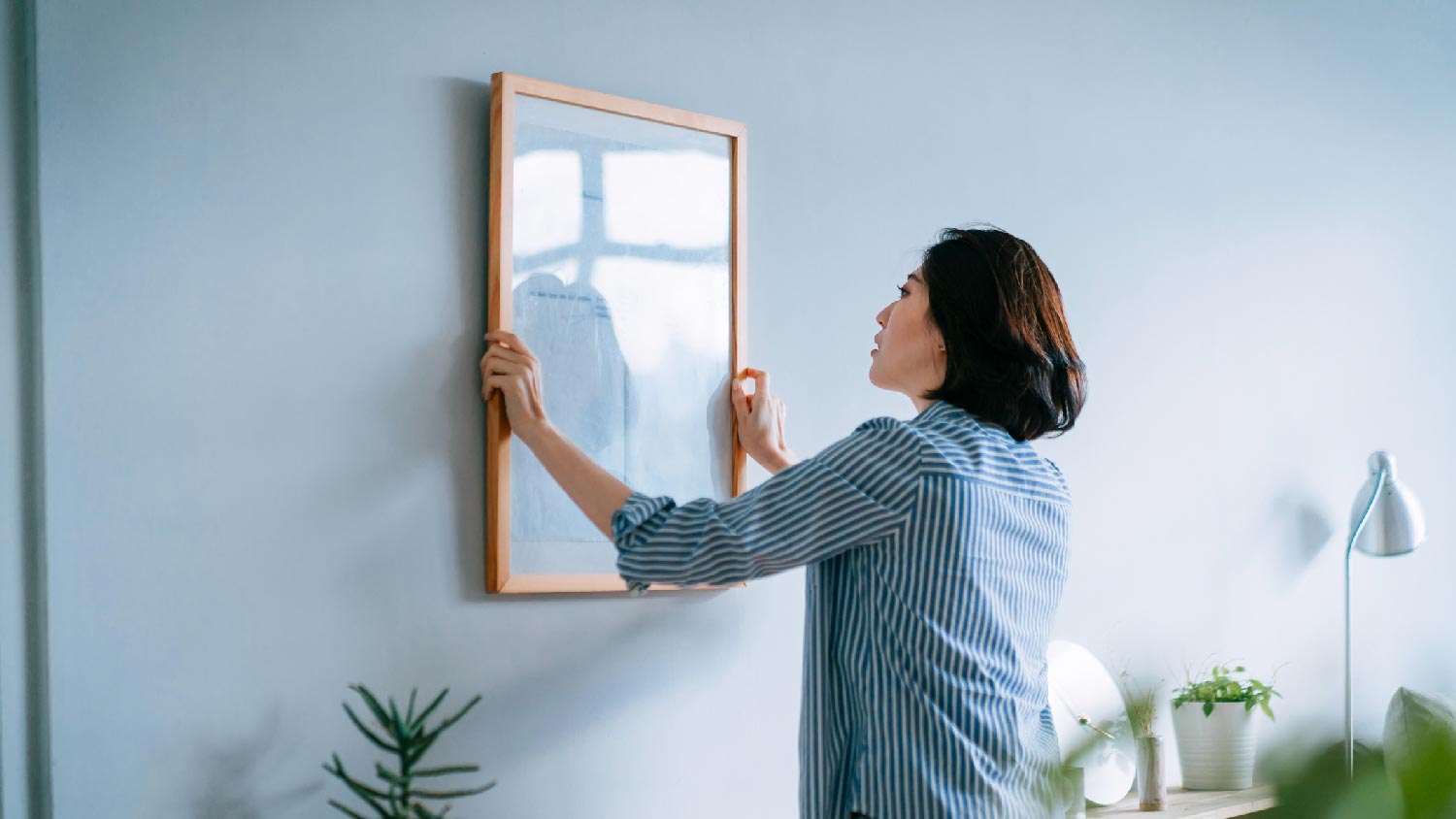
Drywall texture can create an attractive finish and add dimension to your home’s walls. This guide breaks down the factors that influence the cost to texture drywall.
You won’t hit a wall with this project


If you’re patching or repairing textured drywall, achieving the same look can be tough. Luckily, with a few pro moves, you can mimic orange peel, stomp brush, or just about any drywall texture. Dip into these 10 tips for how to match drywall texture.
With the countless types of available drywall textures and their varying popularity, texture matching is an art that takes years to master. That’s why it’s crucial for homeowners to rely on seasoned professionals who specialize in texture matching for the seamless results they’re looking for.

Skip the spackle and use standard joint compound instead. Buy premixed compound to save time, or mix your own for better consistency and performance. For most textured applications, your mixture should resemble the consistency of sour cream. Apply a smooth, thin layer and let it cure. Then, apply a second layer—the one you’ll use to create the texture.
Use a roller with a longer nap, such as a 3/4-inch nap roller, for textured walls. Apply the compound without rolling over the same area twice. Use a sponge, brush, or other tool to create additional texture.

Each drywall texture has a different pattern and formation. Using the right tool makes the matching much easier. Mimic an orange peel finish with an orange peel sponge. Try to find a sponge that most closely resembles the fineness of the pattern. For a popcorn ceiling, use a bristle brush. For a stomp brush finish, pick up a drywall stop brush from your local hardware store.
When the joint compound is wet, press gently but firmly into the material to form the pattern. Most drywall textures involve random patterns with the same tool, so try to create a similar design as the other parts of your wall.
To achieve a light orange peel look, mix the joint compound with extra water to achieve a slightly thinner consistency. Dip a bristle brush into the mixture, then pull back and flick the bristle to spray the joint compound on the wall. Let it cure, then sand as needed to match the existing drywall texture. Be sure to tape off and protect any surfaces you don’t want to get drywall compound on.
It’s crucial to blend the patch with the existing texture. Feather your pattern or spray finish into the surrounding portions of the drywall to achieve a gradual transition, but don’t overdo it. Start with a light application, and add more textured compound as needed. Proper feathering helps ensure the patch doesn’t stand out.

If the drywall texture is more subdued, sand it once it’s fully cured. Opt for 220-grit sandpaper for delicate sanding. Sand minimally at first and check to see how well it matches your existing drywall texture. You can always sand more if needed.
If you have a popcorn ceiling or other textured drywall, consider using a roll-on texture or wall texture spray. These products can help achieve the desired look without requiring specific tools or drywalling skills (though they may not be a perfect match for all textures).
Follow the manufacturer’s instructions for the best results. Most spray cans, for example, have different nozzles and spray distances to achieve certain looks. Start in a small area to test your approach first.
Matching drywall texture requires practice and experimentation. Start with a small or inconspicuous area before applying texture to an entire patch.
Pull the brush or sponge in different directions and in different ways to see what achieves the desired look. Try different consistencies of joint compound, such as a thicker or thinner mixture. Some homeowners blot with a piece of cloth or wadded-up paper to match a texture. Keep trying different things in a small area to see what works best.

It’s challenging for the new texture to mirror the original until you paint it. With most textures, the compound shrinks as it dries, so the peaks or stipples may appear slightly smaller once dry. Paint can also soften the peaks.
When you feel like you’re as close as possible to the texture, apply primer to the new surface and then paint it with two coats.
The biggest reason to get your walls professionally textured is consistency. If you're trying to match a new room to the rest of your house or make repair work blend in perfectly, a pro will be able to do it much more quickly and effectively than most homeowners.
Matching drywall texture takes practice, patience, and the right tools. Your patch likely won’t look perfect. If you’re not happy with how your patch is turning out or you have a large area to repair, work with a drywall repair pro near you who can create a seamless look without the hassle.
The cost of drywall repair ranges from $300 to $950, depending on the size and complexity of the repair.
From average costs to expert advice, get all the answers you need to get your job done.

Drywall texture can create an attractive finish and add dimension to your home’s walls. This guide breaks down the factors that influence the cost to texture drywall.

The cost to replace plaster with drywall can quickly add up. This guide will help you budget for this project and decide if it's worth the effort and cost.

Installing drywall is the most common way to finish your home’s interior. Use this drywall installation cost guide to see what your project is likely to cost.

Studs can be found in a number of ways—you don’t always need a stud finder. Learn which methods are the most accurate, helping you find studs hidden behind a blank wall.

Wet-sanding drywall is a cleaner, safer alternative to dry-sanding. If you’re ready to give it a try, learn how to wet-sand drywall in this step-by-step guide.

How much weight can drywall hold? It depends on a couple of factors, including where you mount the object and the hardware you use. Learn more in this guide.